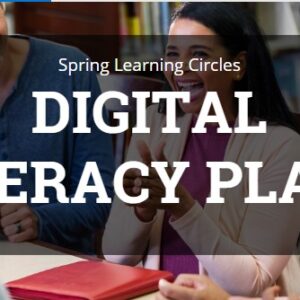By Crystal Dixson, 21 CLEO Research Team Assistant
In our efforts to better understand the characteristics of learning opportunities available to frontline service workers, we’ve undertaken a comprehensive review of the work that has been published and distributed in the field. In our last post, we shared that we’ve collected and reviewed over 50 reports and publications from a variety of sources. This post focuses on our initial findings and insights from this review. If you have additional input and would like to add to our evolving and not-yet-comprehensive list, please contact us at 21cleo@pdx.edu or post a comment below.
It is difficult to create an exhaustive and parallel list of all the learning opportunities available because the way each educational opportunity is designed and implemented from one organization to the next varies. For example, ‘online learning’ can mean many different things depending on the context, platform, and how an organization implements this strategy. The amount of support worker learners receive while participating in these learning opportunities can vary as well. Given the inevitable variability, we have grouped learning opportunities into several categories described in the sections that follow.
Learning opportunities can be categorized by the type of organization delivering the education. In the LearnLaunch Institute’s report, The State of Workforce EdTech, their ‘workforce edtech ecosystem’ is organized into categories based on the consumer: formal education, informal learning, and workplace learning. Workplace is classified as being purchased or obtained by the employer, formal is classified as an educational institution, and informal learning as purchased directly by the learner. This taxonomy is but one framework that organizes these different types of learning opportunities. However, it is useful to think about educational opportunities in terms of their distribution, allowing for additional categories to be observed.
Formal Learning
One type of learning opportunity most are familiar with is formal education. Classes taken at places like community colleges, at four-year colleges, adult learning schools, or community based organizations fall under this umbrella. These classes can result in a traditional degree or certificate. Additionally, classes can be at a brick and mortar school, online, or blended. Basic skills can also be gained from traditional schools, such as basic reading, writing, and high school completion. According to Foundational Skills in the Service Sector, a report from the National Skills Coalition, only 16% of service sector employees receive tuition assistance from employers while pursuing formal degrees and certificates. These employers are more likely to cover some or all of the tuition costs when employees participate in informal training, with 59% receiving assistance when participating in other educational opportunities.
In the Workplace
In more broad terms, workplace learning refers to educational opportunities which take place within the workplace. This includes on-the-job training, which may be structured and result in a certificate or industry recognized credential. On-the-job training could be used to describe apprenticeship programs, internships, as well as occupational training programs. Other types of opportunities that may be classified as workplace learning include on-site learning and integrated educational training. On-site learning involves classes offered at the place of employment, and can include basic skills, ESL, as well as credentials and certificates for skills which will meet the organization’s hiring needs. Integrated educational training combines instruction in basic skills such as reading or math with job related training.
Informal and Self-Directed Learning
Informal learning is a massive category which can encompass anything that takes place outside of a formal institution. The line between formal and informal learning has also been blurred with the introduction of technology, as learners employ technologies like mobile learning to direct and extend their own learning. This type of learning is underrepresented in the literature and less visible to most employers and do not often result in tangible recognition of the learners’ efforts. We understand from preliminary research that technology has made possible more informal learning opportunities and this is an area in need of more focus.
Self-directed learning is another category which has seen a lot of innovation and growth due to increased access to technology. It can be difficult to differentiate what is truly self-directed, as learning resources have been made available by educational institutions and workplaces alike, as well as the companies and startups that enable these organizations to deliver educational opportunities. Formal credentials can be obtained through online learning, as well as workplace training and basic skills training. However, learners may have access to online resources which are less structured, such as MOOCs, or massive open online courses, educational videos and webcasts.
Participation in Learning Opportunities
Frontline workers are taking part in educational opportunities, and many more would like to do so. According to the National Skills Coalitions report, Foundational Skills in the Service Sector, 27% of frontline workers have pursued a formal degree or certificate in the past year. Additionally, 1 out of 3 report that they would like to take part in educational opportunities, but have cited logistical barriers such as a lack of time, resources, incompatible scheduling and family responsibilities. The Programme for International Assessment of Adult Competencies (PIAAC) survey from 2012 and 2014 found that millions of US adults were in need of basic skills, and only 10% were served by current adult education resources. In addition to the need many Americans have for access to education, many have also expressed a desire to continue learning.
How are Learning Opportunities Offered?
The methods in which employers go about offering educational opportunities to their employees vary widely, and these methods have been influenced by current innovations in education and technology. While reviewing current reports on this subject, one theme which stood out was an interest in new educational opportunities, opportunities that have not been widely adopted, and opportunities that do not yet fully exist. It is within the category of self-directed learning that new resources and opportunities have been theorized. Clear examples of possible future opportunities are given in Voice of the Learner, a recent report survey from the Digital Learning Consortium. Professionals from around the world, working in multiple fields, and spanning five generations were asked about their online learning preferences. A major takeaway from this report is that many learners would like to have ownership of a learning record that would travel with them throughout their career.
The Challenge of Different Technology Platforms
Online courses and learning opportunities are offered through multiple platforms. There is a demand for these tools to interact with each other in a more seamless manner so that credentials earned by the learner may be more easily tracked and shared. Moreover, the learners interviewed Voice of the Learner would prefer to find all of their learning on one platform, and to have personalized learning recommendations based on their own career and skill gaps.
The Digital Learning Consortium found that a majority of learners are open to the concept of Artificial Intelligence learning, or an Artificial Intelligence tool which would be able to evaluate an individual’s job role, interests, online behavior, and other factors in order to identify skill gaps and deliver learning suggestions. The DLC has recommended investing in the development of an Artificial Intelligence that will provide a personalized learning experience. Furthermore, Tapping Data for Frontline Talent Development, an interactive web-report from Digital Promise, shows how Artificial Intelligence might be stretched to link results from such personalized learning in a way that learners can communicate competencies to employers while providers can improve educational or support services based on learner-contributed data.
Industry Certifications
Currently, platforms differ and industry certifications earned are not ‘stackable’, meaning the learner cannot track their learning to earn multiple certifications which help them progress towards a higher goal, such as an Associates degree or higher credential. This is especially problematic for workers who have basic skill gaps, who may take part in multiple educational opportunities without making progress towards a meaningful credential leading them toward upward mobility. Changes in policy could be made to ensure that credentials and intra-occupational courses are stackable and more beneficial to the employee. Development of an online platform where credentials can be tracked and shared would be beneficial to the working learner.
Non-Digital Learning Opportunities
Educational opportunities have also emerged in areas not directly related to technology. Apprenticeships are an example of an educational model currently experiencing innovation and growth. Historically, apprenticeships have been associated with skilled trades such as electrical work and carpentry. Apprenticeship frameworks have expanded to include many additional industries, including hospitality, healthcare, and finance. A benefit for learners participating in an apprenticeship program is the decrease in financial burden compared to other learning opportunities. An apprentice who commits to working for an organization for a period of time will receive training and pay, as well as in many cases an industry recognized credential. Apprentices also have the opportunity to achieve a better work and life balance, because they are able to earn a living while they learn.
An example described in the Aspen Institute’s report, Models of Upskilling is the Registered Apprenticeship Program, backed by the US Department of Labor, boasts both high completion and retention rates, as well as an average salary of $60,000 per year. Registered apprenticeships are currently expanding to include hard-to-fill positions in healthcare and finance.
Look for a link to our bibliography in a post in the near future. Note also that we anticipate writing a number of posts that explore each of the different categories represented above. We look forward to sharing what we learn with you and hearing what you are learning from the various publications and in your own work.




